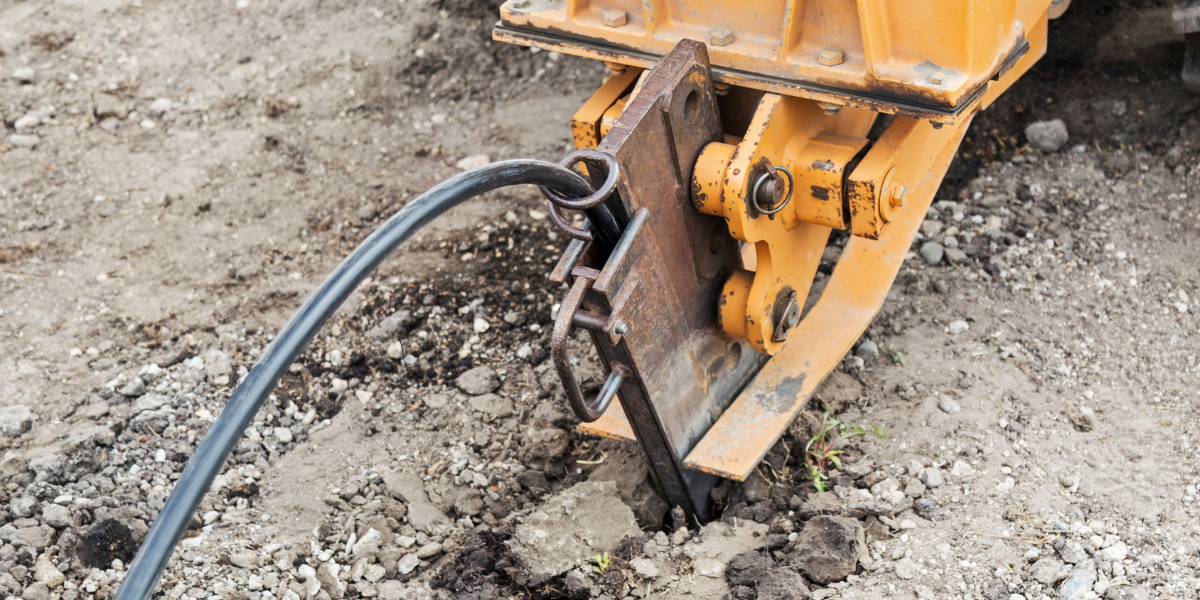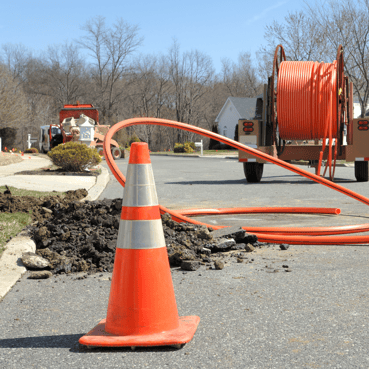
This article was published in the 2024 Excavation Safety Guide.
You’ve called 811, now what? Just waiting the necessary 3 days (depending on your state law) and then proceeding to excavate or directional drill doesn’t mean you will not strike buried utilities. Reading the ticket responses is an important step in following any state 811 laws. Prior to starting the excavation, review the One Call ticket, paying careful attention to the responses provided by the utility owners. The notes may indicate the area is clear, or an on-site meeting is necessary to complete the locates. As part of your notification process you should have white lined your proposed excavation area. This helps ensure the mark out company knows exactly where you plan to excavate.
When you arrive at the work location, examine the area prior to starting your excavation. Walk the area and verify the locate markings have been completed. It is important to review the 811 ticket response and ensure you have all of the facilities marked. Many times, there may be multiple telecommunications providers, and they all need to be marked out. If the trenching is outside the Public Right of Way, the facilities may not be marked and it is the excavator’s responsibility to have the facilities located. Also, privately owned utilities will not be marked out and it will be up to the excavator and/or property owner to identify those underground facilities. Remember the uniform facility color coding markings.
Next, examine your route, looking for potential conflicts where your route crosses another utilities path, or where your proposed route runs closely parallel. All these are areas where potholing may need to be done to ensure your excavation or drilling operating does not damage the adjacent utilities. During this site walk, also look for clues that there may be an unmarked utility. Look at utility poles to see if there are risers for telephone, fiber optic, CATV or electric that haven’t been located. There may be signage on a pole or a field marker to indicate a buried utility. Look for water meter vaults, valve boxes or utility manholes or handholes (all are indicators of buried utilities). As you are conducting your walk around, ensure you are taking video or photos of the route. This helps following a utility strike to prove your path was marked out and you did your due diligence. 
When it comes to communications systems, often ILEC’s and CLEC’s install their systems in a duct bank, but they also routinely install them in a single duct, a pack of inner ducts, directly buried, and installed in a micro trench. Nearly every building or facility is going to have a communication system of some sort. If you do not see an aerial connection, chances are the communication system is buried. Remember there may be multiple ILEC and CLEC telecommunications cables buried at your worksite.
The depths of communications cables can vary greatly. In a micro trench, the line may only be a few inches deep. In other areas the communication system may be much deeper, even exceeding 6 feet. A common “excuse” heard for a deep utility strike is that they went deep to avoid all the other utilities. Chances are, though, that someone else had the same idea. Many times direct buried telecommunications and electric cables do not run in straight lines and may vary in their path. Trenching parallel to these facilities may require additional potholing to verify their exact location from the tolerance zone.
If you are unsure if the locates are accurate or if you think there may be an unmarked utility on private property, Electromagnetic (EM) locators and Ground Penetrating Radar (GPR) are tools that can help you verify locates. Read that again, EM and GPR are tools that can help you verify locates (it does not replace the 811 mark out).
Once you begin digging, take care while working around utilities. Pothole by using hand dig or soft dig techniques, starting at the outside edge of the tolerance zone and work your way in. Once the utility is exposed, leave it uncovered until you have completed your telecommunication installation. Often times the utility is verified, but then the hole is filled in and the utility is struck. Also, pothole where your pathway will cross the marked utility. The depth of marked utilities may change from where you pothole to where you are actually crossing the utility. If your pothole is in a location other than the crossing point, this could lead to damage.
In the event of a utility strike, alert the proper authorities or utility owners. With regard to telecommunications lines, fiber in particular, handle the system with care to prevent further damage and never look into the ends of a fiber optic cable. The light being transmitted may be beyond what human eyes can see, and that light can damage your eyes.
Underground construction can be done safely. Contractors should understand the situation (811 locates and ticket response), do their own verification (walk the site and document), and utilize proper digging techniques (hand or soft digging and proper potholing).
Ken Hill and Dan Marks are both members of NATE: The Communications Infrastructure Contractors Association, with the Safety and Education Committee and Small Cell Committee. Dan Marks has over 20 years of telecom experience and is a Certified Safety Professional (CSP) and Construction Health and Safety Technician (CHST), and OSHA 500 instructor. Ken Hill has over 40 years’ experience in the electric, gas, and telecom utility industry and is an OSHA 500 instructor.

![ESM Sidebar Ad[87] ESM Sidebar Ad[87]](https://excavationsafetyalliance.com/hubfs/ESM%20Sidebar%20Ad%5B87%5D.gif)



Comments